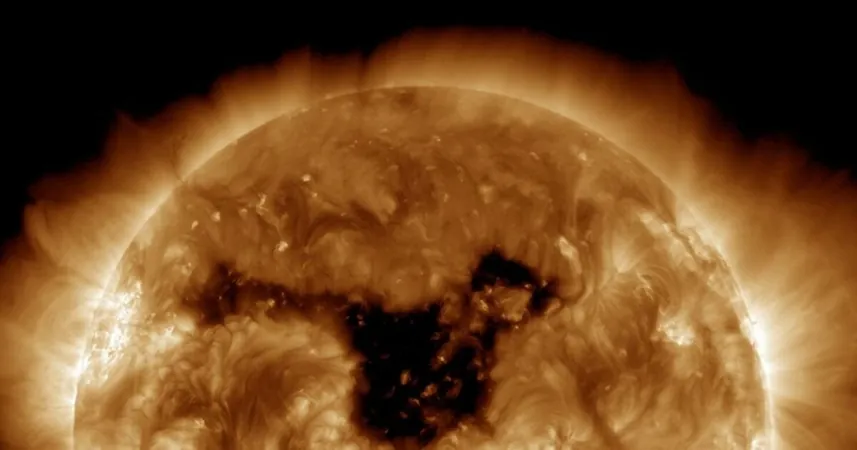
Enormous New Hole Discovered on the Sun: A Threat or a Spectacle?
2025-01-29
Author: Wei Ling
Enormous New Hole Discovered on the Sun: A Threat or a Spectacle?
In an astonishing revelation, NASA scientists have identified a colossal hole on the sun’s surface, measuring an astounding 62 times the size of Earth. This remarkable discovery was captured by NASA’s Solar Dynamics Observatory (SDO), which showcased a vast coronal hole stretching approximately 500,000 miles wide.
What is a Coronal Hole?
A coronal hole (CH) is a significant region within the sun's corona, the outer atmosphere, characterized by a magnetic field that opens up, enabling solar wind to escape more freely into space. These holes appear darker in ultraviolet and X-ray images due to their cooler temperatures and lower densities compared to the surrounding corona, thus making them visually distinct.
Impact on Earth
When solar activity is directed towards Earth, it can give rise to geomagnetic storms. These storms have the potential to disrupt various technologies, including satellite operations, power grids, navigation systems, and radio communications. However, they can also lead to breathtaking natural phenomena—enhancing auroras and creating spectacular displays in the polar skies, popularly referred to as the Northern and Southern Lights.
Upcoming Solar Wind from the Coronal Hole
As per updates from SpaceWeather.com, the solar wind emanating from this new coronal hole is projected to reach Earth by January 31, sparking possible G1 geomagnetic storm conditions. The website noted, "A large hole in the sun's atmosphere is directly facing Earth and blowing a stream of solar wind in our direction. The estimated time of arrival: January 31st or February 1st. Minor G1-class geomagnetic storms are likely when the gaseous material arrives."
Expert Insights
Elaborating on this solar phenomenon, Shawn Dahl, service coordinator at NOAA's Space Weather Prediction Center, explained: "When a coronal hole rotates to the center of the Sun, facing Earth, the heightened speed of solar wind begins its journey towards our planet. It typically reaches us when the coronal hole is somewhere between 40-60 degrees west longitude."
Characteristics of Coronal Holes
Coronal holes serve as a primary source of high-speed solar wind streams, with velocities soaring up to 800 km/s—significantly faster than the slower wind emitted from other sections of the sun. The interaction of this swift solar wind with Earth's magnetosphere can instigate geomagnetic storms, heightening the occurrence and intensity of auroras.
Duration of Activity
What’s more intriguing is that while solar flares are transient events, coronal holes can persist for weeks or even months as they rotate with the sun, which means we might be in for an extended period of solar activity. Scientists are closely monitoring this situation, not only for its potential impact on our technology but also for the awe-inspiring visual displays it could unleash in our skies.
Conclusion
Stay tuned for further developments on this exciting astronomical phenomenon that could create both challenges and marvels here on Earth!




 Brasil (PT)
Brasil (PT)
 Canada (EN)
Canada (EN)
 Chile (ES)
Chile (ES)
 Česko (CS)
Česko (CS)
 대한민국 (KO)
대한민국 (KO)
 España (ES)
España (ES)
 France (FR)
France (FR)
 Hong Kong (EN)
Hong Kong (EN)
 Italia (IT)
Italia (IT)
 日本 (JA)
日本 (JA)
 Magyarország (HU)
Magyarország (HU)
 Norge (NO)
Norge (NO)
 Polska (PL)
Polska (PL)
 Schweiz (DE)
Schweiz (DE)
 Singapore (EN)
Singapore (EN)
 Sverige (SV)
Sverige (SV)
 Suomi (FI)
Suomi (FI)
 Türkiye (TR)
Türkiye (TR)